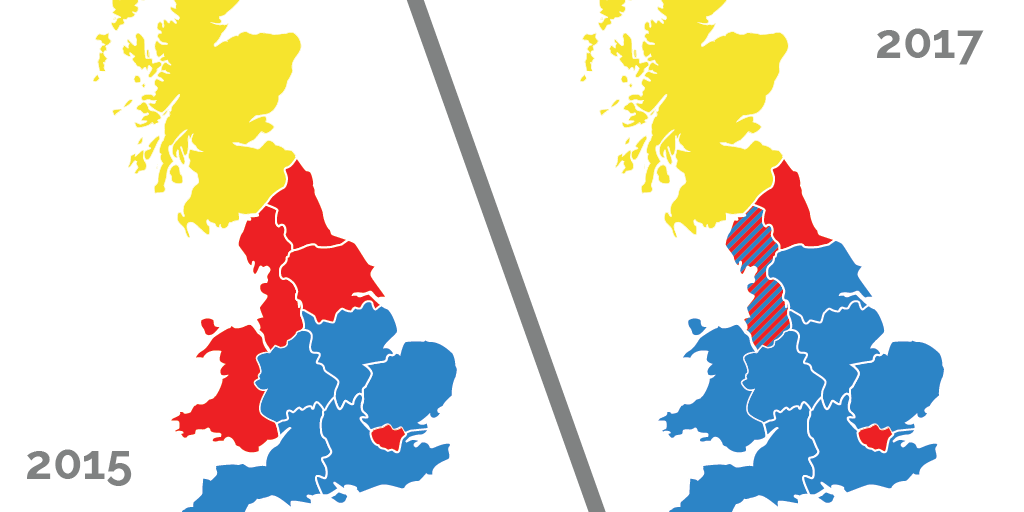With the opening stage of the campaign drawing to a close as parties unveil their manifestos, YouGov reveals how each region of Britain intends to vote at the general election
For the first time in this election, YouGov reveals the voting intention picture in each British government office region. The fieldwork, conducted from April 24 to May 5, shows:
- The Conservative vote share is up, sometimes dramatically so, since the last general election in every region of the UK.
- Labour are down on their 2015 vote haul in every region of the UK except the South West and South East where they were already performing poorly.
- The Liberal Democrat vote share is up in most regions, but only by small margins.
- UKIP’s vote share is down seven to ten points in all regions except Scotland and London, where they were already performing poorly.
North East
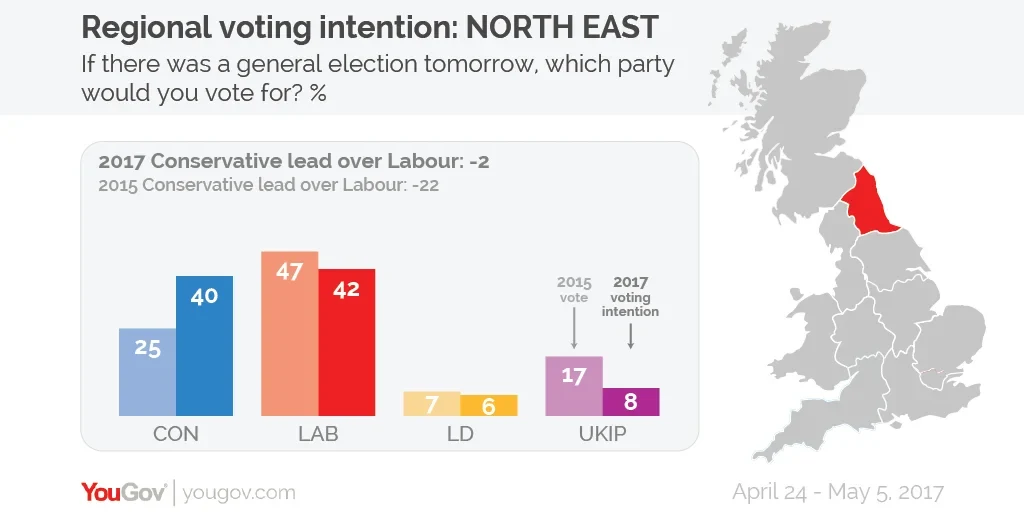
One of only two regions in the UK where Labour are ahead of the Tories, the Conservatives have nevertheless closed a twenty two point deficit at the 2015 election to just two points now (Labour 42%, Conservatives 40%). The fifteen point increase in the Conservative vote since the last election is the highest of any region in the country, while the five point Labour drop is one of their worst. The region also played host to the shock Conservative victory at the Tees Valley mayoral election, which could be a harbinger of further surprise Tory wins to come at the general election.
North West
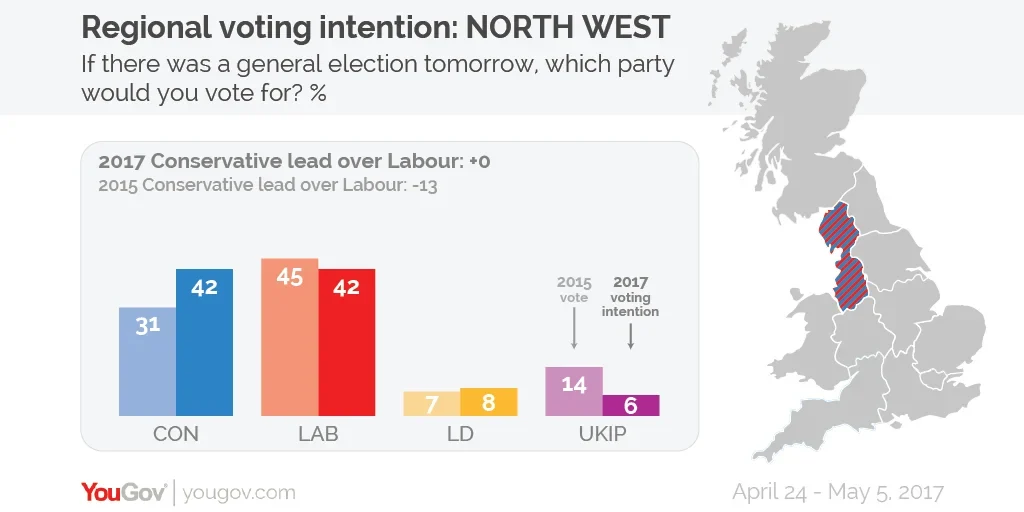
The Conservatives have come from thirteen points behind at the 2015 general election to neck and neck with Labour (42% apiece). The North West is the region where Labour holds the most seats, winning 51 at the general election, and is in serious trouble if they start losing seats in significant numbers here. The Conservatives damaged Labour by wresting the Copeland constituency from them for the first time ever at a by-election earlier in the year, although Labour held on to Manchester and Liverpool comfortably at the recent mayoral elections.
Yorkshire and the Humber
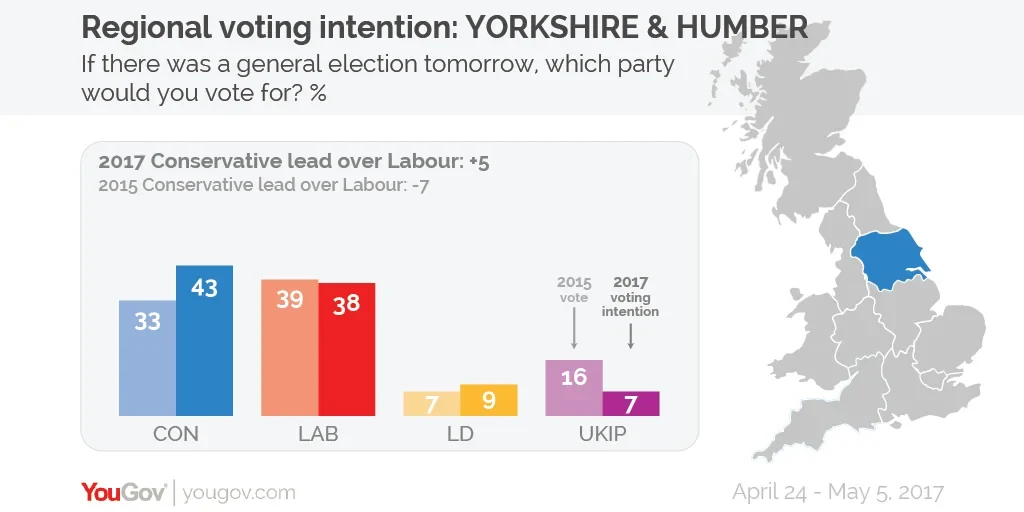
The Conservatives have turned a Labour lead of seven points at the 2015 election to a five point lead of their own now. Both Jeremy Corbyn and Theresa May made appearances in Leeds recently, and the region is seen as a key battleground for both sides. The most marginal seats in the region are a mix of Conservative and Labour-held constituencies – including Morley and Outwood, the site of Ed Balls’ shock defeat at the 2015 election – and both sides will be hoping to seize seats here.
East Midlands
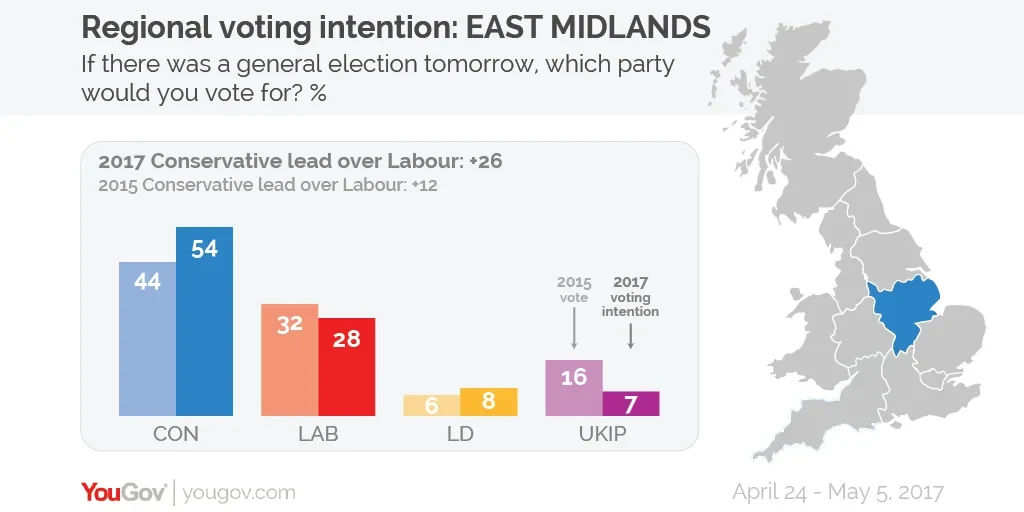
The Conservatives have extended their 2015 twelve point lead over Labour to twenty six points now. The Conservative vote share of 54% is the third highest in the country (behind the South East and East of England). The Conservatives already hold two thirds of the seats in the region, and the most marginal seats in the constituency are already Conservative held, but the heavy swing to the Tories could see them pick up unexpected gains.
West Midlands
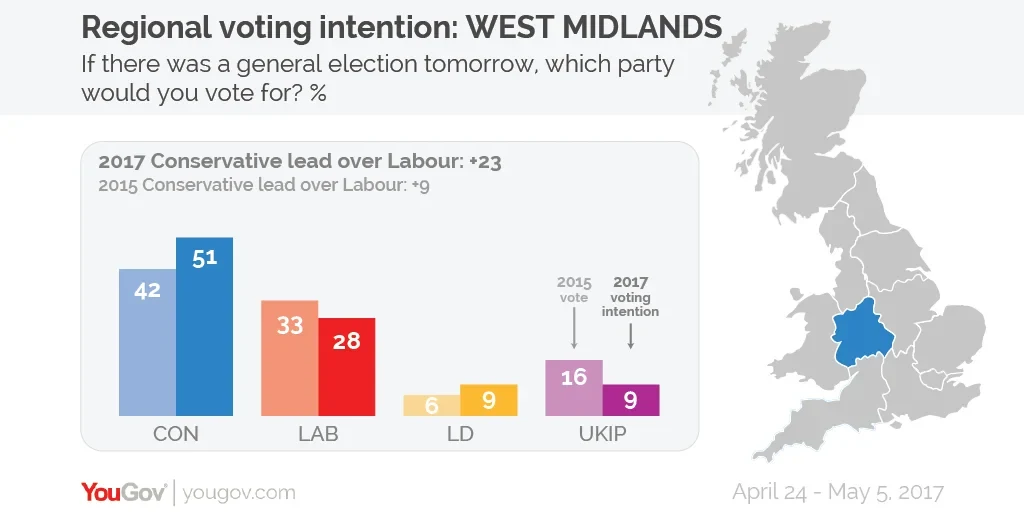
With Birmingham the site of the Conservatives’ second surprise victory during the metro mayoral elections, the party will now be eyeing up more ambitious target seats in the West Midlands. The Tories’ nine point lead over Labour in 2015 has since increased to 23 points.
East of England
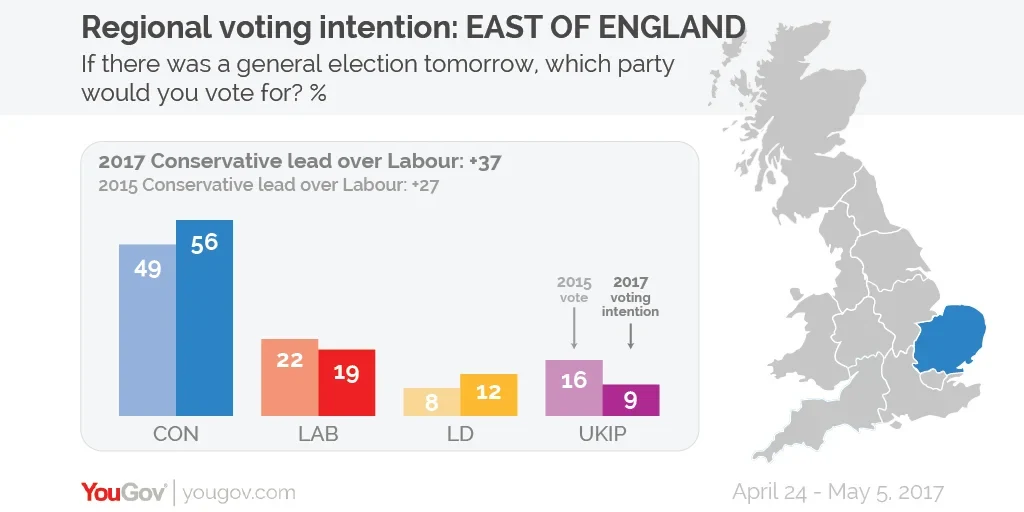
With a vote share of 56%, the East of England is tied with the South East for the most heavily Conservative region of the country. In both regions the Conservatives’ lead over Labour is a huge 37 points, although the Conservatives already hold 52 out of 58 seats in the region, so potential gains are limited.
London
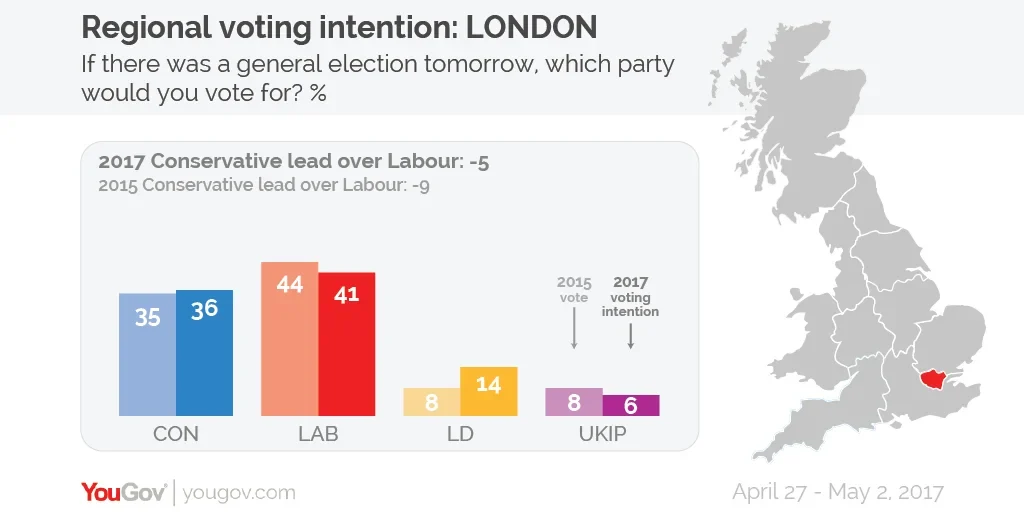
Labour’s modern day stronghold, such as it is, the city voted to elect Labour’s Sadiq Khan as mayor in 2016. Labour’s five point lead over the Conservatives (41% vs 36%) is the highest in any region of the country, although their vote share is down three points on the 2015 general election. The Conservatives meanwhile have only improved on their 2015 vote haul by one point.
The Lib Dems are up six points since the last election – their highest increase anywhere in the country (joint with the South East) – putting them on 14%. This will give hope to the party that some prominent former Lib Dem MPs like Vince Cable and Ed Davey can regain their seats in the capital.
South East
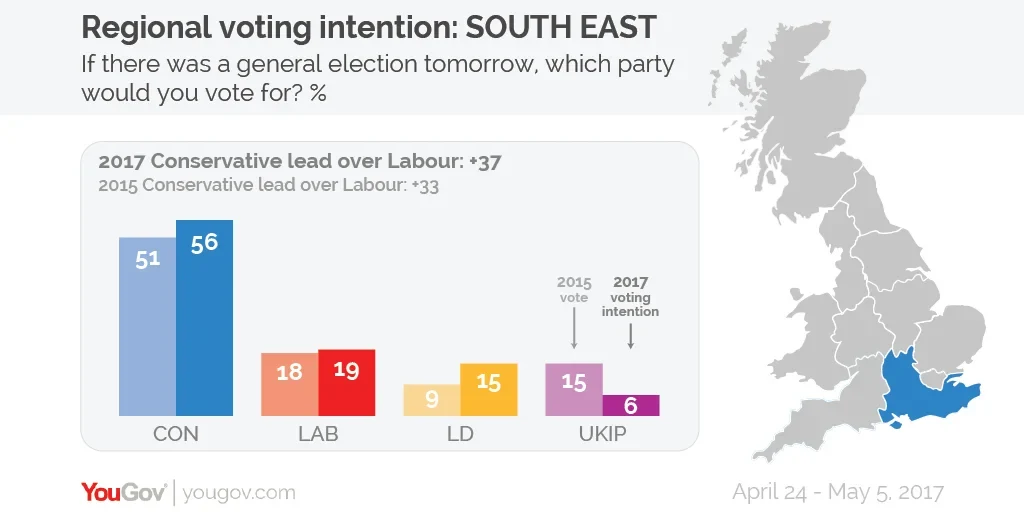
The quintessential Conservative heartland, at 56% the party’s vote share is joint highest (with East of England) of any region in the UK. As with the East of England, the Conservatives already hold the vast majority (78 out of 84) seats in the region, so significant gains here aren’t possible.
The #LibDemfightback has been strongest in the South East (joint with London), with the party gaining six percentage points on their 2015 vote share and polling at 15% overall. Both regions had the highest proportion of Remain voters anywhere in England, and the party will be looking to regain at least some of the four seats they lost in the region last time.
South West
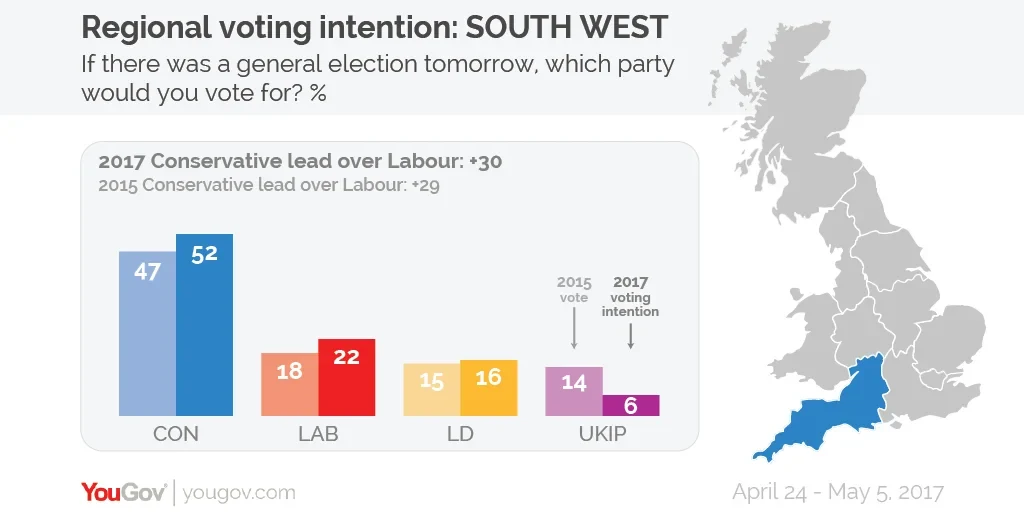
Former Lib Dem heartland, the party was wiped out in 2015 and will be hoping to make a comeback here. Whilst the 16% vote share the Liberal Democrats have in the region is the highest of any in the country, it is only up one point since the 2015 election (well below its 2010 high of 35% when the party won 15 seats in the region). In the same time period, Conservative voting intention has increased from 47% to 52%, while the UKIP vote has collapsed from 14% to 6%.
Previously leaked internal polling for the Conservatives revealed concerns that the party would lose many of the seats in the South West that they gained from the Lib Dems in 2015 – the UKIP collapse may be enough to mitigate this.
Wales
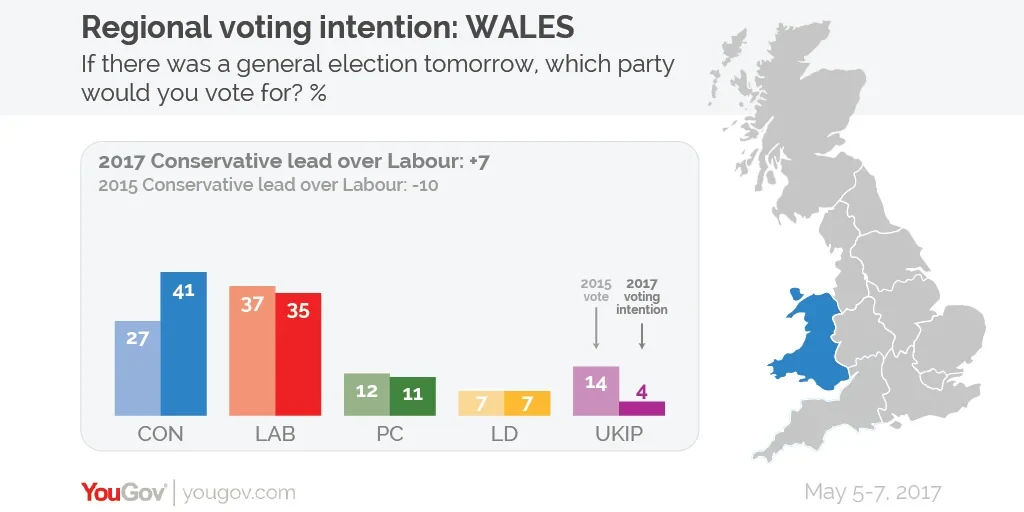
YouGov has examined the Conservative surge in Wales previously. The Conservative improvement of 14 points on their 2015 election tally is their second highest in the UK, behind the North East, and seems to have come at the expense of UKIP who have plummeted 10 points to just 4% of the vote. Should the Conservatives remain ahead on polling day it would be the first time since 1922 that the party has won the largest share of the vote in the nation.
Scotland
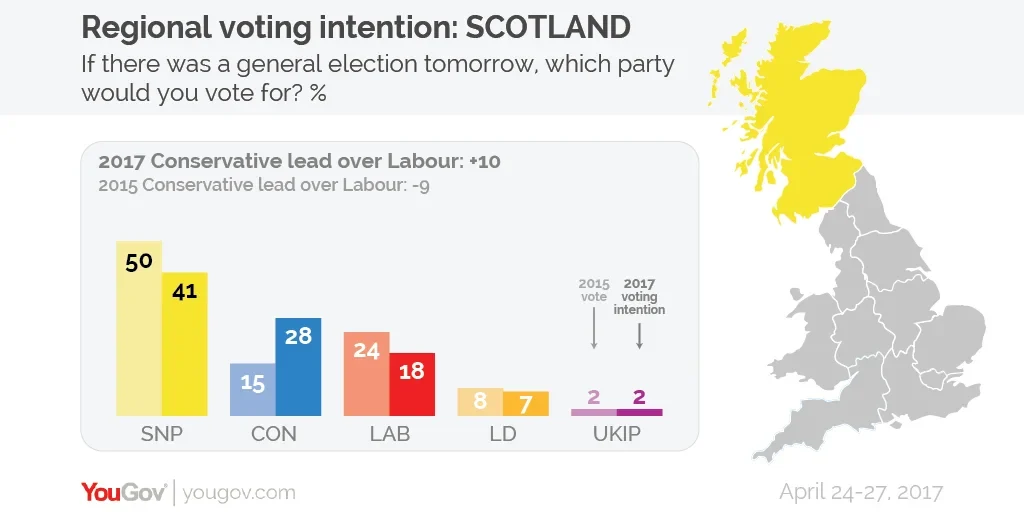
Most attention in Scotland has been on the Conservative resurgence at Labour’s expense – the Tories have nearly doubled their vote share, increasing from 15% in 2015 to 28% now. Labour meanwhile have seen their share of the vote decline from 24% to 18% now – their lowest share of the vote anywhere in the UK.
This is something of a sideshow to continued SNP dominance, however. The nationalists remain in command at 41% of the vote, although this does represent a nine point decrease on their share of the vote in 2015.
